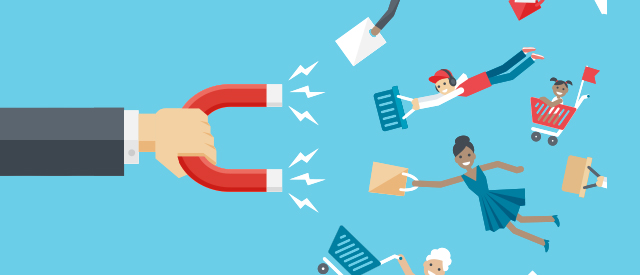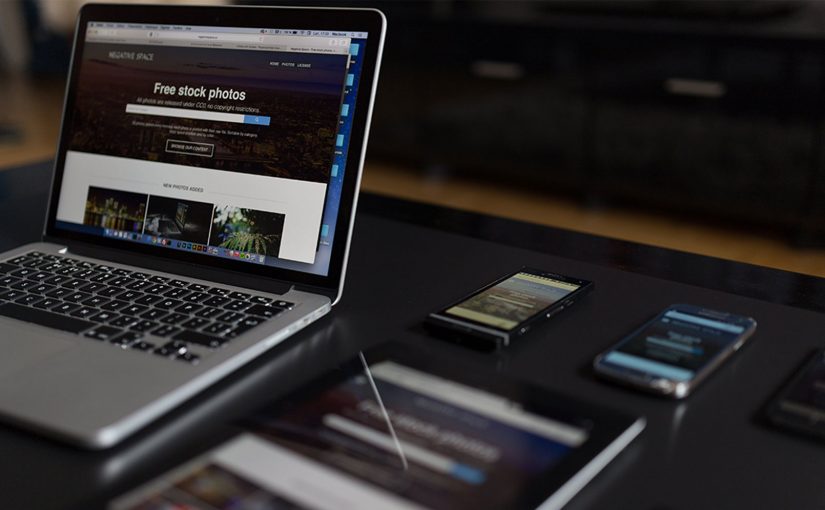Product customization has made a place for itself in the E-Commerce industry and it has gained well deserved cynosure due to the popularity of this model.
January 11, 2021There are so many products that hit the market every single week. So companies try to come up with innovative ideas to overcome this issue and ensure that their product stands out in the market. However, it is no easy task to stand out in a market where there is such a huge bloom of innovation taking place every week. This is one of the most major reasons that gave rise to the idea of product customization. But is it really worth it? And should your company jump the bandwagon?
The reality of the matter is, building, buying, and/or customizing a digital product has many benefits and an equally long list of drawbacks; it all just depends on what outcomes you want from your product. Both, customization or no customization, have their own growth potential. However; if the process is not accessed properly and the risk factors are not catered to, both of them can potentially cause a jolt in growth as well. Before deciding which route to take, a company should first try to understand exactly why they are taking that particular route and more importantly: why they are not opting for the alternative? Many factors are in play when it comes to making a decision, from the cost of the product, effort required to implement the decision, time needed to research, analyze and implement on the decided changes, all the way till marketing of the brand. Even highly experienced product leaders may find it to be a cumbersome task to research new products in the market, upcoming technology and sophisticated softwares. The most effective way to make this decision is to enlist all the possibilities that are present and then come to a final course of action that is best suited for your product and best aligned with the vision of your company. Before making a decision one needs to understand what is product customization?
Product customization or personalization is a process of delivering goods, services or products to your users that have been customized according to the client’s requirements. It can be done in two ways; either a customer is allowed by the company to make changes and personalize the product, in which case customization options are available online on the company application or website. In this case, the company takes responsibility for the customization that takes place, provides multiple options to choose from and delivers the final personalized version of the product. The other way is that the user buys the product and then personalizes it on their own. This does not affect the company in any way and is not the responsibility of the company either.
Product customization has made a place for itself in the E-Commerce industry and it has gained well deserved cynosure due to the popularity of this model. There are many factors at play that need to be considered before making a final decision about what to do about these concerns. To determine whether it is more feasible to make a customizable product or not, we have put together a list of points to consider which are mentioned below:
COST
Cost is one of the biggest drawbacks of making a customizable product. It is no cheap feature to launch in a digital product. It is necessary to consider the buying cost as well as the implementation cost. As customization is more expensive as an option all together and the cost of the work may even fluctuate. If cost is a major concern for you and you have limited resources at the time of launching a new product or service, a standard product may be the ideal decision for you as it is typically the cheaper route. However, that is not all. Products that are pre-built may be cheaper in the initial phases, the cost associated with them in the long run may increase. These products usually have licenses and updates that need to be renewed over time, this will serve as a reinvestment in the same product to keep it on the shelf.
On the other hand it is also notable that you could charge more for a customizable product. A recent review of consumers by Deloitte has reported that every 1 in 5 consumers are prepared to pay an extra 20% for an exclusive or personalized product. Also, according to Invesp, 59% of the marketers are getting a good return on investments, ROI, after offering the product personalization option. These results show that there is a huge profitable margin in customizable products and services that can be tapped into if your company has the capital needed for the initial investment. If the product launch goes well, then the cost would not be a hurdle due to a great margin of profit that can be obtained from the sales later on.
BRAND IDENTITY
If a company jumps into the customization too briskly, there is a risk of losing your brand identity. It takes a while for consumers to associate with a brand, its logo and its design. When a company jumps head first into customization, the consumer may never be able to develop a clear image of what the company actually stands for and believes in. This can also lead to the consumers never being able to develop that brand loyalty as your company may lose the ability to create that brand image that a consumer may require in the long run. Imagine the brand image of Nike. As a consumer, we have a vivid image of what the company ‘Nike’ stands for; the style of products they create and what their logo looks like. The company was founded in 1964 and their first customizable product was launched in 1999. At such a point in the company’s growth, if they decide to venture into customization, it is more feasible as they can benefit from the fruits of customization without losing what the company stands for in the way. The consumers already resonate with the brand image of ‘Nike’ and a change where people get to personalize the product brings nothing but great benefits for the company. People need to see the brand as something solid rather than something completely moldable. Letting people change the products before your brand has a steady image can leave the brand image disfigured altogether.
“If you try to please everyone, you please no one”
-Aesop
However, there are certain benefits of starting customization early as well. One of these benefits is that providing customizable products can become a conversation starter. It can get people talking about your company and help you gain more engagement due to this word of mouth marketing. According to Invesp, word of mouth marketing drives $6 trillion of consumer spending per annum. That is a great market to tap into. It has 5 times more sales impression on consumers compared to paid advertisements. People tend to trust the word of other consumers as they believe that the other user is not trying to sell the product and therefore, they are providing an honest opinion or feedback. The statistics also suggest that people are 90% more likely to buy a product that is suggested by a friend and have more trust in a brand that friends talk good about. Invesp data suggests that 28% of the consumers say that word of mouth is the most important factor in the process of strengthening the brand affinity. The influence of people on consumers is undeniable, which is why companies tend to send their product to influencers as personal relationship, PR, packages. A positive word of mouth can be an effective, free of cost marketing strategy.
TRICKY TO IMPLEMENT
So let’s imagine that you have a customizable product on the market. This additional feature could be very difficult to implement for your company. One of the reasons behind it is not having enough choices. Imagine that the product allows people to choose a color they desire for the theme and a customer wants ruby red but you offer more generic color options such as red, yellow, blue, and green. This may make the clients feel that they do not have enough options.
The second hurdle in your way might be what psychologists call “the paradox of choice”; people tend to feel less satisfied, less happy and less inclined to make a decision when they are provided with too many options. People tend to get more uncertain about which option they want to go with and lead them away from making a decision all together. These concerns are difficult to overcome and it is quite tricky to constantly achieve a balance between providing too much and providing too little options to the client.
MANUFACTURING EFFICIENCY
Although customization seems like a great idea, the reality is far more complex. When customization is made available to the client, there is a wide variety of mutually exclusive orders that are to be processed. These orders can neither be manufactured in advance nor can they be manufactured in bulk. Each order is created individually with its specific instructions. This can cause delays in product delivery and customers might not be able to get their products delivered to them on the standard time of delivery. However, there are ways around this as well. Statistics show that 46% of users claim that they are happily willing to wait longer to get their product or service, if it is customized. This gives companies some leniency that they can utilize.
When a company offers customization to their customers, the manufacturing of these customizable products are mostly handled by a third party and not the company itself. These third party manufacturers usually take the responsibility of maintenance and product delivery to stay ahead of the competition, however; these third party manufacturers may not share your vision of quality consistency. The products being dished out may not live up to the standards that you, as a company, are trying to maintain. Another concern when signing with a third party manufacturer is that they may not be willing to create all the designs that are being presented to them at the agreed cost. Sometimes, the company is requested with a very intricate design in customization which may take up more effort on the manufacturers end. An outsourced manufacturer may demand a higher cut for such designs that may not be financially suitable for the company in the long run.
When issues like quality assurance or slow deliveries of products start to occur, no one is blamed except the company and the company name is tarnished due to external factors that are not entirely controllable for the company.
CUSTOMER SATISFACTION
With a customizable product, one of the biggest advantages that you have as a company is an increase in customer satisfaction. Imagine going on YouTube and your search for music shows you a new Russian song release, two Korean hits and a woman singing on her balcony in German. This would be extremely uninteresting for you if you can only speak English and that’s the only sort of music you are interested in. This is why YouTube customizes your search according to your previous search preferences. This customization drives people to return to the website and keep them engaged due to the suggestibility of related videos.
Customization also provides users with a sense of ownership over the product. To understand this better, think about buying a mobile phone that comes with a pre-set puppy wallpaper. A user may want to put up a more personalized wall paper or they may not like dogs to begin with. Providing these customization options can help users feel more emotionally connected to the products being offered by a company. This also allows the company an opportunity to be unique. The company can be a provider of a product that was already available in the market however, customization can make your product stand out in the crowd and give it a unique edge that other products don’t have.
CUSTOMER LOYALTY
Building a customizable product with top tier quality for your client, you will build a bond of loyalty with the consumer. They will reappear at your doorsteps every time they require a new product that is personalized according to their needs. Once they experience that you are capable of providing great products, they will not want to go around and explore new options for their work.
However, on the contrary, one must always think about one thing: how many customizable products do people buy? Imagine a user with 12 mugs in their house, on average how many of these mugs are customized? One? Maybe even two. The rest of the 10 mugs would be bought off the shelf. Same goes for digital products. Many people like to get personalized products once or twice for the experience of a customized service but then they shift back to off the shelf products as they are a quicker, cheaper option and they already have a customized product at home to fulfil their desire of getting one. The customer may stay loyal to your brand by returning to you every time they need to get a personalized product but they will not require a customizable product too often.
BETTER INSIGHT
There is one benefit of customization that is not commonly discussed which is better insight. Letting customers personalize the products that your company offers gives you an insight into your customers. You can take your business one step further by analyzing the requirements of clients and access the trends that are more popular. You can determine the preferences of the majority of your customers and this can be highly beneficial for your future products. It can help you understand what designs and features you need to incorporate into any future product or update that your company might be working on. It allows you to have a jump start towards success by creating products that are in line with the preferences of the majority of your customers.
This provides companies with data that is personalized to their line of work and the type of products they are creating. This will help in the delivery of relevant products that are optimized to fit the requirements of the clients. It also has a huge impact on reducing risk by mitigating the chances of failure; post launch of the product.
MANAGING EXPECTATIONS
Managing expectations of clients is a very difficult task. When customers are free to design a product, they might not be able to sufficiently convey the design or changes that they have in their mind. This may cause a large gap between the expected outcome and the produced outcome. The client may end up saying that things are not how he/she expected them to be; this may not even be a design issue or a quality concern, but an ideal high expectation that a product may never be able to deliver.
According to statistics, only 16% of the interested customers believe that the companies that provide the option of personalization would be able to deliver on the promise. This can be due to the fact that most companies underestimate the obstacles of customization and end up disappointing their customers in return. When most people opt for a customizable product they assume that they will receive something completely unique and perfectly splendid. When the expectations are set so high it is really difficult to meet such standards in delivery.
TIME CONSUMING
Building a customizable product takes a lot of time and added research. It takes time to identify the aspects that you are planning to customize, the level of customization that you are ready to offer. If you are planning on allowing personalization of the product, you need to be willing to invest your time gathering information about how the entire process will work. This process will also require many test runs to see what works and what doesn’t. Sometimes this can slow down the overall efficiency of a company and cause hurdles in the seamless working of the office.
CONCLUSION
So when does one buy an on the shelf product and when does one customize products to their needs? It is very true that the decision of whether to sell a standardized or customized product is a lot more complex than an article can entail as the right answer to this question would be different for every situation. Although, there is no straight line that can lead to the answer of this question, there are still cues that can tell a company whether they are ready to take a leap towards customization or not. If a company is new and this is the first product being launched, it might be a better idea to stick to a standardized product that is not customizable. As a new company there may be many unseen risks that are already heading towards the company and it is better to delay the process of personalization and other additional features till later. To top it all off, budget is a big determinant of whether this is the right move for you or not. Not all the companies have enough capital to cushion themselves in case things do not go as planned.
There are many benefits that one can reap from customization. However, along with these benefits are many setbacks. It all boils down to what the company aims to do with the product and what is the vision behind launching it. Solaris Technologies always provides free consultation to all of their clients to ensure that they make decisions that are best suited to their company’s requirements. It is essential to have some degree of guidance before investing in a project in any one direction as it can create a huge capital loss in case the decision was not suitable for the company. Furthermore, it is quite easy to tarnish the image of a company by just one bad launch. In the age of social media it is very difficult to get people to forget the mishaps as everything that a company launches stays online. Which is why it is quintessential to get consultation before you can decide whether you want to opt for this route or not.




